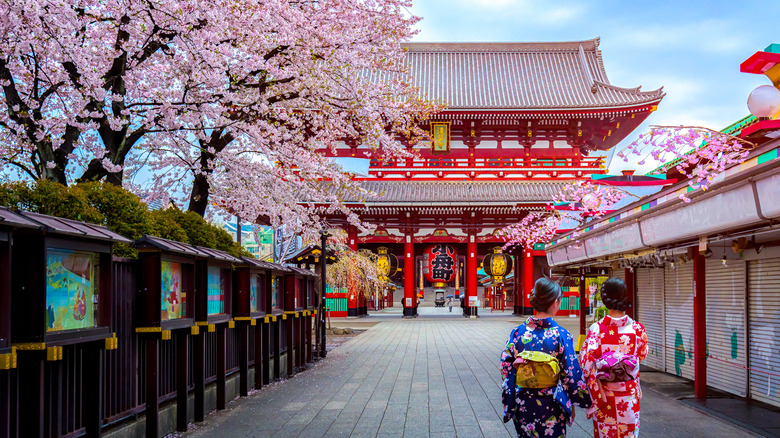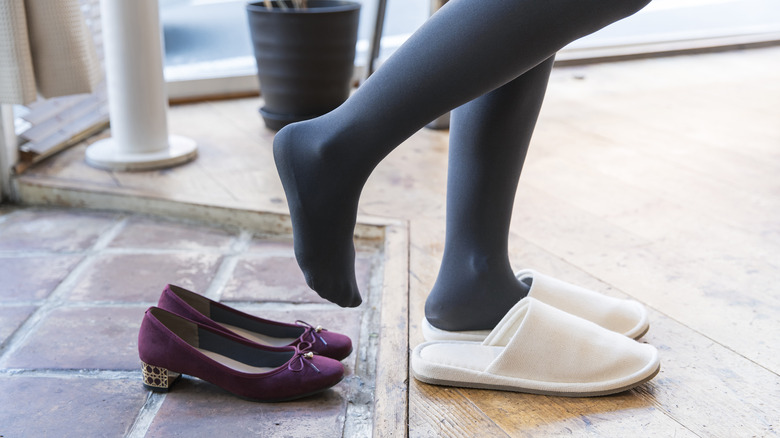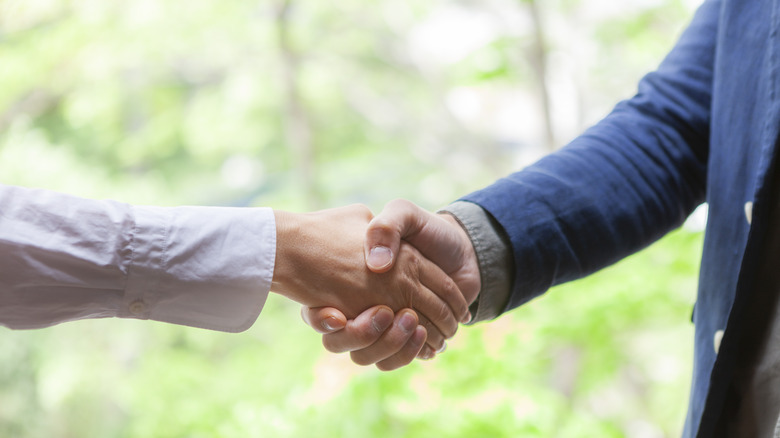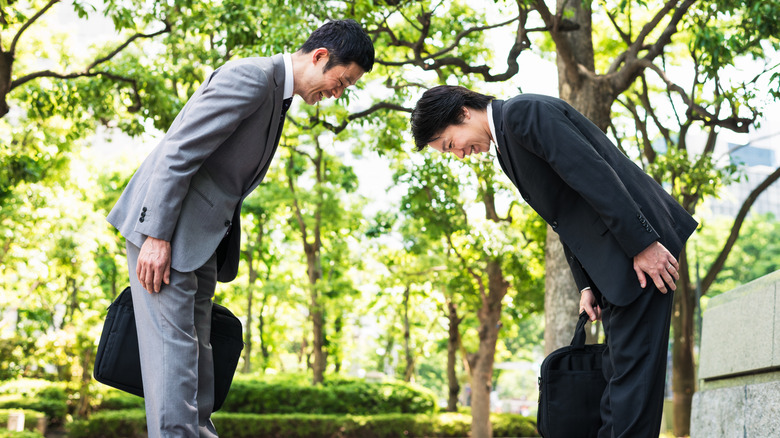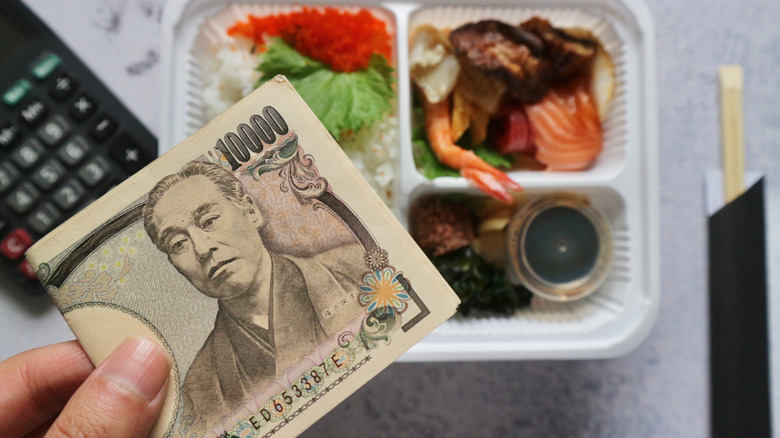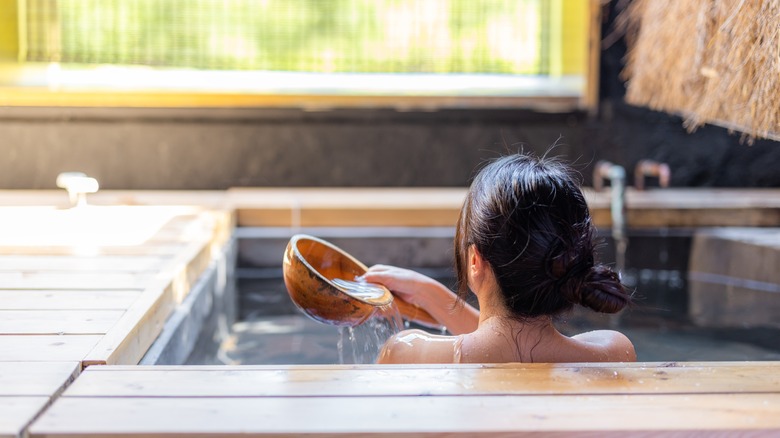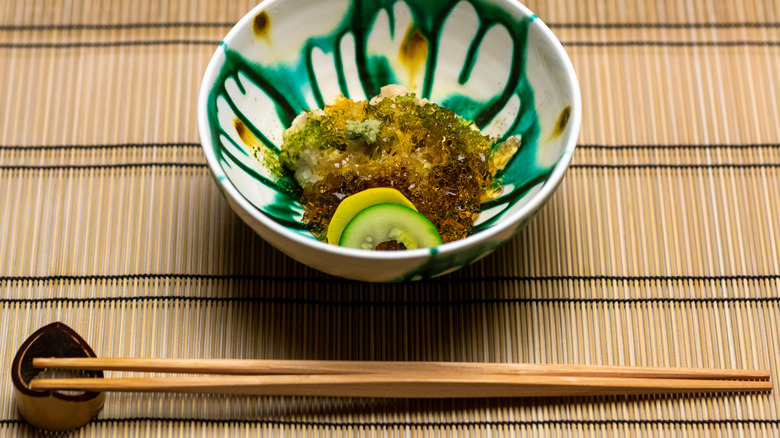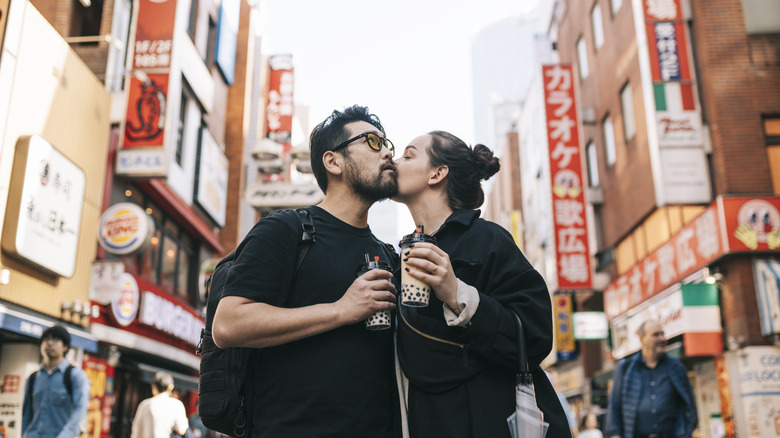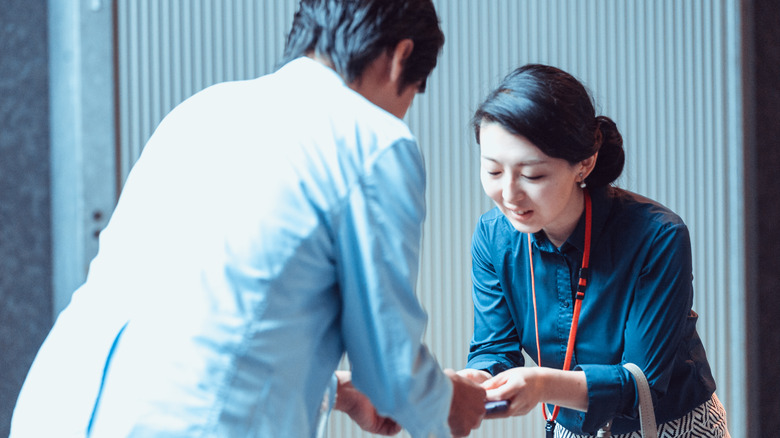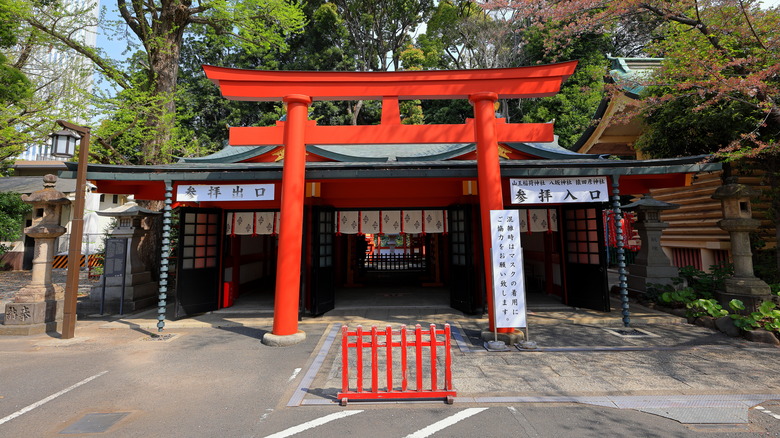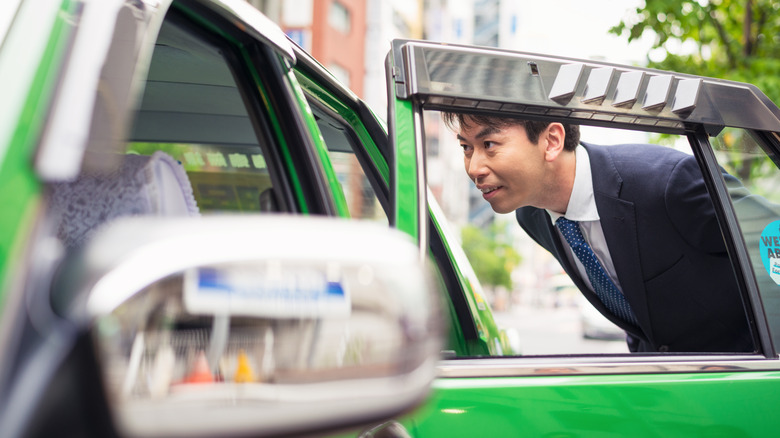13 Things Tourists Should Never Do When Visiting Japan
Whenever you travel to a new destination, it's important to be aware of the local customs. Japanese culture, in particular, is known for its heavy focus on etiquette. Social harmony is hugely important in Japan, and there is an intricate code of conduct centered around this concept. Many of the social norms in Japan can be quite different from those in the West, which can be intimidating for tourists visiting for the first time. However, with a little bit of knowledge, you can avoid making a social faux pas.
One of the first things you might notice when you visit Japan is how polite most people are. Courtesy and consideration towards others are highly valued in Japanese culture. In fact, there is even a term for it. The word "teinei" can translate to politeness, reverence, respect, and conscientiousness. You'll probably find that this extends to you as a tourist, even to the point where Japanese people will avoid telling you if you're doing something wrong to spare your feelings.
While Japanese people don't expect foreigners to know all of their customs, a little bit of cultural understanding goes a long way. In other words, small actions can make a big difference in showing respect and knowing the major taboos can prevent you from offending the locals. If you want to be a considerate tourist in Japan, these are some things you should avoid doing.
Wear your shoes inside
Most Asian cultures have a strict "no-shoe" policy in homes, temples, and some businesses, and Japan is no exception. Basically, it comes down to cleanliness. Tracking dirt from the outside indoors is considered highly unhygienic. Many Japanese interiors have tatami mats on the floors used as sitting areas and for dining. Futons are often rolled out on the floor for sleeping. Therefore, the less dirt and water tracked in, the better. If you're invited into a Japanese home or want to visit a temple, ryokan, or onsen, be prepared to take your shoes off.
Genkans are small areas at the entrance of a home or building where you can leave your shoes. Some restaurants have lockers where you can place your shoes in a secure spot. When you step into the interior of a building, there may be slippers available for you to wear inside. There will likely be different slippers for use in the bathroom because the bathroom is also considered unclean. Keep an eye out for genkans because they're a clear indicator that you will need to take your shoes off. You might also want to be mindful about wearing clean, hole-free socks.
Shake people's hands
In general, Japanese people don't shake hands. In fact, purposely touching other people in public is not common practice. Bowing is the common way to greet someone and express respect. That being said, it's not necessarily rude to shake someone's hand. After all, many Japanese are aware that it's a common Western practice. However, you may find that your handshake is met with some awkwardness. You'll likely get a very soft handshake accompanied by a small bow.
Some Japanese people may initiate a handshake out of respect for your culture. If this happens, there are a few things to keep in mind. First, don't grip their hand too hard. While this might be a sign of confidence and strength in other cultures, it could be taken as a sign of aggression in Japan. Second, don't hold on to their hand for too long. And definitely don't pull them in for a hug as an add-on to the handshake. Japanese people don't typically hug either, so you'll probably be making the recipient doubly uneasy.
Bow too high or too low
Speaking of bowing, this is a great way to win brownie points with the Japanese people you meet. After all, bowing is the most common form of greeting in Japan. However, there is an art to doing it properly. Bow too low and for too long, and you might come off as being sarcastic or insincere. Bow too high, and you might seem arrogant or disrespectful.
The correct way to bow is from the waist forward with your hands at your sides. Women sometimes cross both hands in front of their midsection while bowing. If you're giving a casual bow, a slight nod of the head to an angle of about 15 degrees is usually the norm. To be more respectful to people you don't know very well, 30 degrees is acceptable. A bow of 45 degrees is typically reserved for VIPs or when you want to express apologies. Before you get too overwhelmed, just know that most Japanese people are well aware that bowing isn't common in some other cultures. Even if you do it slightly wrong, the gesture will likely be appreciated.
Speak loudly in public places
If you've ever been on a train or bus and had to suffer through someone else jabbering away on their phone at high volume, you know how annoying it can be. You probably don't want to be that person anywhere, but particularly in Japan. Japanese culture is all about social harmony, and one way to achieve this is by not disturbing the people around you unnecessarily. Speaking loudly in public places is considered incredibly disrespectful.
While you might not get dirty looks for speaking somewhat loudly in public places like restaurants or parks, the train is one place where you have to be conscious of your noise levels. You may feel the urge to crank up your music on that long commute or narrate the Instagram reel or TikTok you're making of that scenic train ride, but your fellow commuters won't be very impressed. If you're traveling with someone else and want to chat, try to keep your volume to a minimum. You should also set your phone to "manner mode" (on silent or vibrate) and refrain from taking calls until you're off the train.
Tip
For all the folks who think tipping culture is getting out of control, you'll be happy to know that tipping is not common in Japan. It's not customary to tip valets, servers, bartenders, taxi drivers, and most other service providers. In fact, most people will chase after you with any extra money you leave beyond the bill or fare, and some may even be offended and refuse to take your tip. The thinking is that the price already incorporates the superb service. People take pride in offering great hospitality without expecting anything extra in return.
There are only a few exceptions to the no-tipping rule in Japan. It is acceptable to leave a tip at a ryokan (traditional Japanese inn) for the room attendant or the ryokan owner. You can also tip geishas and private tour guides. The respectful way to give or leave a tip is in an envelope. Whipping out money from your wallet and handing it over directly is considered bad taste. If you're handing the envelope directly to the recipient, pass it to them with both hands.
Visit an onsen if you have tattoos
Onsen are hot springs or baths, and soaking in them is a quintessential Japanese pastime. However, be aware that many onsens do not allow guests with tattoos to enter. This is because tattoos have traditionally been associated with gangsters and outlaws in Japan. During the Edo period (1603 to 1868), tattoos were a form of punishment for criminals. In the Meiji period, the government banned tattoos outright, causing many yakuza members to don ink as a form of rebellion. Although the ban on tattoos was lifted in 1948, the stigma still remains to this day.
Times are changing though, so there are some onsens and ryokans with hot springs that allow people with tattoos to soak in the pools. Some ryokans will also allow you to book the baths for a private session so that you don't risk offending anyone. If you are allowed to soak in the pools, be sure to follow the onsen rules. Strip down to your birthday suit, wash off before entering the pools, and don't dip the towel they provide you in the pool.
Place your chopsticks vertically in your bowl
You may get odd looks in Japan if you stick your chopsticks upright in your bowl. At Japanese funerals, a bowl of rice is typically left for the deceased with a pair of chopsticks sticking straight up. Incense sticks are also placed vertically in bowls at funerals. Therefore, similarly, placing your chopsticks at the dinner table will probably remind people of death, which no one really wants to think about when enjoying a meal. Some people also think you invite bad luck when you place chopsticks vertically in a bowl.
If you want to show your dining companions that you have good table manners, set your chopsticks to the side of your bowl or plate on the chopstick holder if one is provided. If there is no chopstick rest, set your chopsticks directly on the placemat or table. Never pass food from one set of chopsticks to another. This is also similar to a funeral rite where family members pass a deceased person's bones with chopsticks. In addition, don't use chopsticks to take food from the communal serving dish. Use the serving utensils that come with the dish or a clean pair of chopsticks.
Point directly at people
Pointing directly at people is considered bad form in Japan because it has connotations of anger and aggression. Much like in Western culture, pointing also functions as a way of singling someone out or emphasizing something they've done wrong. This goes against Japan's typically conformist, non-confrontational societal norms. It's fine to point at an inanimate object or in the general direction of something, but try not to point directly at people if you can avoid it.
If you want to gesture at someone or indicate that you want someone to come over to you, use your whole hand with your fingers pointed down. A good way to remember this is to think of the waving cats you see in Asian restaurants and businesses. Those cats actually originated in Japan, and they're called "maneki-neko," which means "beckoning cat." They're not actually meant to be waving; they're beckoning people and good luck into the business.
Pour your own drink
If you're at a social event in Japan where drinks are being served, don't grab the bottle and start topping yourself up. It's customary to pour drinks for other people at the table first as a sign of respect. Your tablemates will do the same for you in return. There is often a hierarchy involved with pouring drinks in Japan. Younger people pour drinks for senior people first, and lower-level workers will serve senior colleagues first. However, if everyone at the table is around the same age or equal in status, people take turns pouring drinks.
It's also polite to wait until everyone at the table has been served to take a sip of your drink. One thing that most people will find familiar in Japanese drinking culture is the cheers ritual. Usually, after the first round of drinks have been poured, everyone will say "kanpai" (cheers) and clink glasses before drinking. This will probably happen multiple times. In fact, drinking sessions in Japan can go on for hours and get quite rowdy. If you've decided you're at your limit, simply leave your beverage untouched so that no one feels the need to top you up again.
Public displays of affection
In general, Japanese people are not touchy-feely — at least not in public. You won't see many people hugging or kissing on the streets. Public displays of affection are considered taboo, so anything more than holding hands is likely to raise eyebrows. This is because romance, passion, and physical affection are private affairs in Japan and are not meant to be on display for everyone to see.
The Japanese term "icha icha" loosely translates to lovey-dovey behavior in public and it can refer to anything from flirting to making out and talking explicitly about sexual topics. According to Sora News 24, many Japanese people are uncomfortable seeing people acting this way, especially in confined spaces where it's right in front of their faces. Some people find PDAs irritating, while others find it downright repugnant.
For LGBTQI+ couples, Japan is relatively safe in that you're unlikely to experience outright harassment or discrimination. Same-sex marriages are not legal in Japan yet, but many prefectures have recognized same-sex partnerships. However, just as with hetero couples, overt displays of affection might invite some dirty looks. No matter what your sexual orientation, if you want to avoid offending anyone, it's best to tone down the PDAs until you're behind closed doors.
Offer a business card with one hand
Business relationships are a big deal in Japan, so much so that the simple act of exchanging business cards has its own particular etiquette. Business cards are symbolic of the person and the business they represent, so they should be treated with respect. If you plan on networking in Japan, be sure your cards are clean, crisp, and kept in a respectable place like a proper business card holder.
The correct way to present someone your card is to first turn it towards them so the writing is facing their direction. Then, hand your card over with both hands. When someone offers you their business card, receive it with both hands. Handing a business card off flippantly indicates that you don't respect the company you work for or, worse, the other person. After you have received their card, take the time to read it and place it on the table or hold onto it until the exchange is over. In other words, don't just stuff it in your pocket or wallet in front of the other person.
Walk down the center of a path of shrine
Japanese shrines are some of the most unmissable tourist destinations in Japan, so you'll probably want to visit at least one while in the country. Being the holy places they are, shrines come with their own set of rules. One of the first rules you should be aware of is to stay to the sides when entering a torii gate. The middle of the path is reserved for the gods. If you want to be extra respectful, you can make a small bow before passing under the gate.
Once you've stepped through the torii onto the sacred grounds, you'll see a basin with water. This is for purifying yourself before entering the main area of the shrine. Use the ladle to wash the left hand first, then the right. Then, pour some water onto your left hand and use it to rinse your mouth. Now you're ready to enter the shrine. Remember that shrines are sanctuaries for the gods, so dress respectfully and speak softly. In some shrines, there may be rules against taking photos in the main areas. That said, keep an eye out for signs displaying the rules.
Open a taxi door yourself
It's second nature for most people hailing a taxi to reach for the door when the cab comes to a stop. However, in Japan that's not the case. Most taxis have automatic rear doors that the driver controls. Passengers are supposed to wait for the driver to open the door for them. This has the dual benefit of providing an extra level of hospitality for you and ensuring safety for the driver. When you're dropped off at your destination, the driver will open the door for you once you've paid your fare.
Other than the automatic doors, taxis in Japan are pretty similar to everywhere else in the world. You can hail them down on the street, call a cab company to send a taxi or order a ride through an app. If you want to hail a taxi on the street, look for a red light that indicates a car is vacant. Green means they already have a fare. Most taxis in Japan take cash, credit cards, and debit cards for payment. Every taxi will have a meter that calculates the fare, so you don't have to worry about shady drivers overcharging. Uber is also available in Japan, but most people prefer taxis over ride-share apps.
